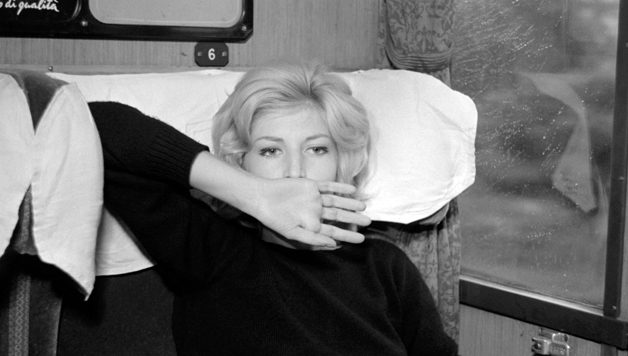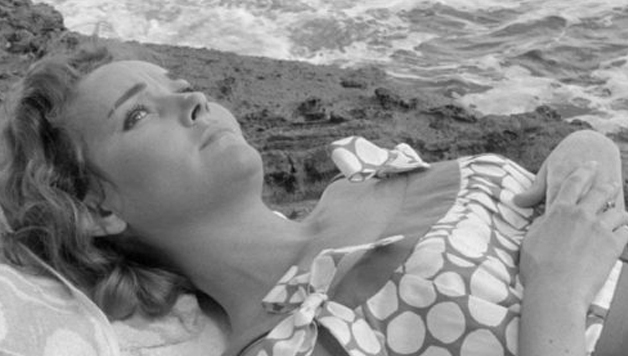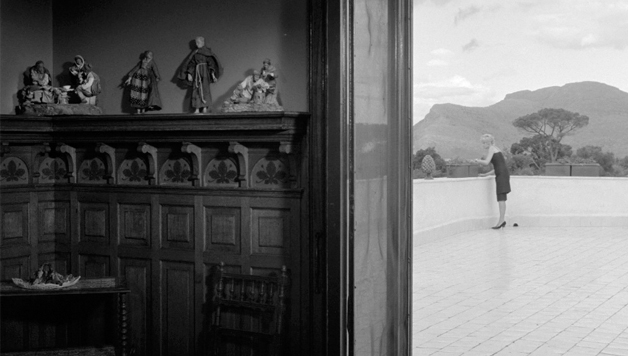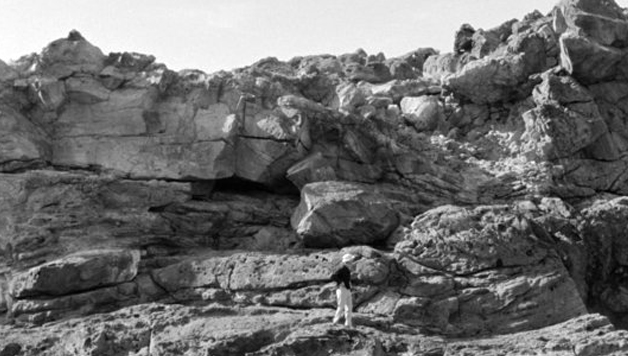L’avventura
Director: Michelangelo Antonioni / 1960 / 1.77:1 aspect ratio / 143 Minutes
by Mike Restaino
[This is the second in a series of essays reconsidering notable and perhaps unheralded films from the vault, pieces of cinema that are more culturally imperative and artistically pristine in retrospect than they appeared at the time of their release.]
“I meant exactly what I said: that we are saddled with a culture that hasn’t advanced as far as science.” – Michelangelo Antonioni

- Heaven and Hell All at Once. When we first arrive at the Sicilian island where Michelangelo Antonioni stages most of the action in L’avventura, its stark seaside visage is stunning. Waves smash, winds whip, and our cadre of main characters – disenfranchised urbanites from Italy – wander island hills while being photographed almost impossibly lushly: they’re handsome, chiseled, classic, steeped with pouty mod ennui. This duality of nature and mental discomfort provides the meat of Antonioni’s thesis here, the idea that one can be simultaneously pessimistic and life-affirming. The film involves a group of wealthy folks on a boat cruise who are shocked to find that one of their party (a super-rich socialite played by Lea Massari) has gone missing. As her fiancé (Gabriele Ferzetti) and her bosom buddy (Monica Vitti) search for her, they become romantically tangled, and the ground falls out beneath them. As we watch the erotically-charged events of the film play out against the backdrop of a barren, somehow ancient ocean nature, L’avventura broadcasts an embrace of cosmic entropy: for every passion there must be apathy, for every beauty there must be horror. Remember that great Thelonious Monk quote Thomas Pynchon uses to open Against the Day: “It’s always night, or we wouldn’t need light.”

- A Defiantly Visual Journey. Antonioni’s work is uniquely postmodern, which makes him sometimes oblique and emotionally cold to viewers not versed in his intellectual proclivities. But what he does with L’avventura is all but liberate his characters from their pasts via the cinematic image. Antonioni acknowledges that he can’t bring his audience up to date on the histories and backgrounds of the people on screen, nor does he want to do such a thing. No, all M.A. has is his filmmaking squad and (most importantly) his camera, so as L’avventura begins, it quickly becomes apparent that everything we discern within his flickering imagery is imperative, purposeful. With a painterly mystery, Antonioni relies on the events occurring on screen and very little more. This is not to imply that L’avventura is skin-deep: what becomes revelatory in the film is that even with his stern, strictly-composed shot construction, Antonioni is a wonderfully inventive cinematic impressionist. He doesn’t use characters or scenarios to offer up directly divined symbology: as The Criterion Collection infers on their robust edition of the movie, he invents a new film grammar with L’avventura, a moving language all his own.

- A European Arthouse Anti-Hitchcock? As one lingers through L’avventura, one of the more heady realizations that come to light is that the entire notion of classically-defined meaning might not have much relevance to this particular film. As many film scholars have argued, this disinterest in explicit narrative or metaphorical significance puts Antonioni on the opposite side of a filmic tug-of-war with someone like Alfred Hitchcock. Hitchcock’s brilliance persists, in part, because his movie are ingenious codes – every detail and narrative turn on display in movies like Vertigo, North by Northwest, or The Birds is a wormhole to illuminating subtext and multiple symbolic clues. In pictures like L’avventura (and later M.A. films like The Passenger and Red Desert), what you see is what you get. It’s often uncomfortable for an audience, but if one can tap into Antonioni’s wavelength, L’avventura provides a brave, empowering reminder that narrative cinema doesn’t need to be as familiar or recognizable as one might think to work like gangbusters.

- The Limits of Evolution. L’avventura is not simply an intellectual enterprise – regardless of its brainy inclinations, at its heart it is a simple narrative mystery – but should you choose to dive into its history as a piece of European filmmaking from the 1960s, it’s plain to see that there’s a lot at play here. One of the major questions the picture inspires regards the boundaries that exist in our world. Is it possible to evolve through our human forms, or are these vessels we inhabit an endgame? Do we have power as homo sapiens to acknowledge science yet move past it? Can science, our agreed common ground as earthlings, be thrown out? These are vague concepts, to be sure, but the looming sense of mankind’s complacency to the world and the universe infuses every moment of L’avventura. Antonioni presents a narrative where characters seem happy to settle for normalcy, who see the unknown territories in their physical and mental futures and opt to console themselves with vanilla strains of love, sex, art, and hooch, rather than proceed into an unsteady, unfamiliar darkness.

- The Shackles Come Off. Both as a piece of art and an act of thundering intellectual ingenuity, L’avventura dares both its characters and its audience to break free of the world we think we recognize around us. Included with the Criterion DVD/Blu-ray of the movie is a marvelously pretentious and blustery statement from Antonioni from the movie’s Cannes Film Festival debut, in which he says:
“For even though we know that the ancient codes of morality are decrepit and no longer tenable, we persist, with a sense of perversity that I would only ironically define as pathetic, in remaining loyal to them. Thus moral man, who has no fear of the scientific unknown, is today afraid of the moral unknown.”
Sure, this kind of hoity-toity philosophical banter is full of big words and hazy definitions, but it captures L’avventura’s brazen freshness. Why not give culture at large the middle finger and forge new paths? Why not engage our physiological senses as well as challenge them, develop them? Why not entertain a movie audience without the age-old tropes of modern visual language?
L’avventura is – even upon repeat viewings – new, unique. Filmmakers of more recent generations certainly have emulated and inserted Antonioni’s singular vision into their own visual architecture, but with this, M.A.’s most famous film, we’re reminded that there aren’t any limits or parameters to cinematic art. In L’avventura, Antonioni gives his audience everything they want – Girls! Intrigue! Mystery! Danger! – but does so in a fashion that remains, 50+ years later, one of the most enigmatic, mercurial motion pictures of its age.
Mike Restaino is a filmmaker and writer based out of Incline Village, NV. He has spent more than twenty years as a movie critic and lecturer and takes every opportunity he can to work with MYTHWORKS and Pamela Jaye Smith.